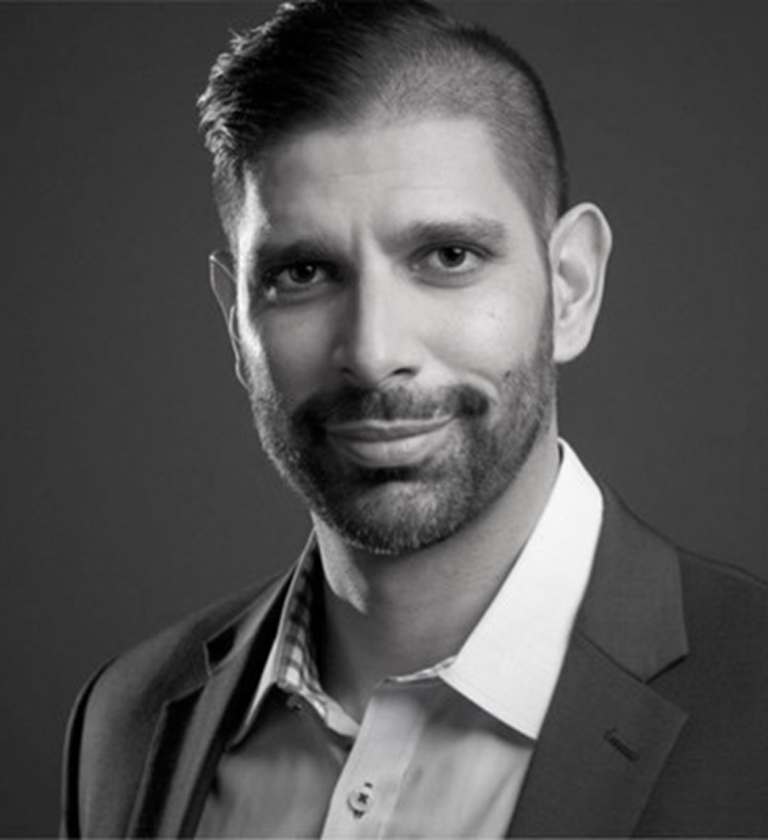3×4 Coaching
As supply chain issues and staffing challenges continue to hammer organizations, there are two critical moments that determine whether people will stay committed and rise to the challenge: The crisis of engagement, when people realize their path forward is harder than they thought it would be; and the crisis of meaning, the emotional low that makes them question whether to continue.
To stay committed and see the journey through, people need three things from their leader: clarity on what they’re supposed to be doing and why it matters; the skills and abilities to be confident in their job; and a sense that they’re seen and appreciated.
In this webinar, Third Factor Principal Trainer,
Garry Watanabe, will synthesize our 30 years of experience working with world-class coaches and reveal a simple framework to give leaders the mindset, skills and tools to keep people committed – and ultimately drive results.
You’ll leave inspired with fresh ideas for addressing problems caused by the “great resignation” and other pandemic-related disruption, and a clear image of how you can use coaching at all levels of your organization to fight burnout and keep people engaged.
You should attend if:
- You’re responsible for maintaining employee engagement and retention despite serious disruption
- You’re an L&D practitioner frustrated by other coaching programs that deliver poor results
- You’re a senior leader looking to drive performance without sacrificing a positive culture
- You want a new approach for getting commitment and results from the people you lead
Coaching in Critical Moments
Sorry we missed you
This event has passed, but it won’t be the last. Be the first to know about future webinars from Third Factor by entering your information below.
 About the presenter:
Garry Watanabe
About the presenter:
Garry Watanabe is a lawyer, an instructor at the Smith School of Business at Queen’s University, an inspirational speaker, and holds a Masters Degree in Sport Psychology. Whether he’s on the pool deck, in the classroom, or at the lectern, Garry is the consummate coach.
Imagine you’re organizing an in-person learning event for a group of 30 senior leaders. You’ve spent weeks getting the details just right. It’s the first time this group will be getting together in over two years, and you can’t wait for two days of interactive, collaborative learning.
And then, the calls start to come in. One week out from the event, the head of marketing tells you there is a case of Covid-19 in her daughter’s classroom, and she will need to attend the session remotely to keep her in self-isolation. Then, three days before, two more calls come from sales leaders who need to travel to meet with clients and will need to participate remotely.
In a matter of days, 10% of your group needs to attend remotely. More requests are sure to come in, and your team now needs to come up with a way to accommodate both in-person and remote learners on short notice.
This is the new reality. The question is no longer whether to deliver learning remote or in-person – but rather whether to be fully remote or to host a hybrid learning experience. By assuming all in-person events will need to accommodate remote participants – and planning accordingly – you can create learning experiences that are ready to adapt to whatever may come.
Hybrid is to Netflix as in-person is to Blockbuster
Hybrid learning events struggle to achieve their goals when they’re treated as an in-person experience first. But as many industries have learned the hard way when undergoing disruption, you can’t do what you’ve always done and expect the same results. Much as Blockbuster failed to recognize Netflix as a serious disruptor, learning organizations stand to fail by ignoring the importance and permanence of hybrid learning.
Much as Blockbuster failed to recognize Netflix as a serious disruptor, learning organizations stand to fail by ignoring the importance and permanence of hybrid learning.
When L&D professionals do as Blockbuster did and try to carry on with business as usual, the result is a poor experience. The overarching problem is the lack of interactivity between in-person and remote participants, resulting from poorly adapted technology and resources, limited opportunities for participants to connect with each other, and a failure of the event organizers and facilitators to understand participants ahead of time.
At the heart of solving these problems before they happen is a focus on creating a unified experience for all learners. Successful hybrid learning events do this by giving careful consideration to how technology is used, creating opportunities for participants to connect, and getting to know participants ahead of time. In delivering hybrid learning to our clients, we’ve observed some innovative practices that exemplify this philosophy.
Adapt technology to the human experience – not vice-versa
Inequality in hybrid learning environments often results when the human element is considered secondarily to technology. For example, remote participants suffer when their experience is made possible by a laptop placed near the front of the room. Thoughtful hybrid learning design considers the desired experience first and then uses technology to build quality and efficiency, creating a “one-classroom” model where all participants feel included and barriers to communication are removed.
Bring the online experience into the room
One of our clients, a major quick-service restaurant chain, added a screen at the front of the room displaying the online experience. This ensured everyone in the room, including the facilitator and participants, were constantly aware of the people who weren’t physically present.
Create a screen-friendly experience for online participants
In early 2020, our partners in the Full-Time MBA program at the Smith School of Business at Queen’s University found a way for remote learners to experience the class in the same way as the in-person cohort by hiring a full-time videographer. As the approach has proven successful, the program is now leveraging technology to deliver the experience more efficiently with an automated system.
As a low-cost alternative, the quick-service restaurant chain asked in-person participants to bring their laptops and join the online meeting, keeping their cameras on so remote participants could see faces and hear comments. An AV support team set up microphones at every table to ensure remote participants could hear discussions clearly and both the in-person and remote conversations were moderated. We like this approach enough that we’ve adopted it for our own hybrid staff meetings – with great success.
Have support to bridge the gap
The Smith MBA program addressed cross-medium communication challenges by placing a staff member in each classroom to act as a moderator, managing the incoming Zoom information and filtering it to the faculty to ensure the remote participation was managed efficiently.
Create opportunities for participants to connect with each other
What we know as we gain more experience through this hybrid world is that people are craving more opportunities to connect on both a personal and professional level with their colleagues – a part of the experience that’s often neglected for online participants.
At larger events, we’ve seen this solved with formalized “brain dates” in which participants have scheduled time to meet one-on-one or in a small group, and indicate their preference to meet live, online, or hybrid. Meetings can be on a subject relevant to the event or less-formal opportunities for networking.
Our team at Third Factor has addressed this by scheduling a regular meeting with cameras on to share from our learning experiences and connect about what’s happening at a personal and professional level. We don’t just stop there though, many of us set up informal coffee chats to reconnect with each other, have a laugh, and sometimes we actually have a coffee!
Understand the field before playing the game
In our 3×4 Coaching program, we teach that people can’t commit without having clarity on what’s expected and why it matters. Successful hybrid learning events require the organizers and facilitators to have clarity on who the participants are and what their needs are.
One of our favorite ways of building clarity comes from the legendary basketball coach Jack Donohue, who would ask: “what would you see,” and “what would you hear.” I.e., what would you see and hear if you were a remote participant having a positive, engaging experience?
The Smith MBA Program called this “understanding the field before playing the game.” The instructor got to know remote participants’ names and locations ahead of time, and was able to use that information to engage them – acknowledging them personally and asking questions of them throughout the session.
Keep your eyes wide open
As Albert Einstein said, “you can’t use an old map to explore a new world.” To execute successful hybrid learning events, learning & development teams need to recognize that the choice isn’t between remote and in-person learning; it’s between remote and hybrid.
Every in-person event will inevitably need to accommodate remote participants, at least in the near-future. To ensure your next learning event is successful, this shift in designing your learning experiences will require thoughtful planning to put the human experience ahead of technology, create opportunities for participants to connect with each other, and get to know your participants ahead of time so everyone can be included.
As people leave their jobs in record numbers, organizations are facing two urgent challenges: increase engagement to reduce churn; and prepare those who stay to adapt to the rapidly changing needs of the business.
The solution to both of these challenges is to invest in people and get them excited about their own growth and development. People are more likely to stay – and more resilient to changing demands – when they feel a sense of growth, contribution and connection. But with 40% of employees saying they’re likely to leave their job within 6 months1, time is running out.
Career Conversations is a highly interactive one-hour session that puts people leaders at the centre of a strategy for helping employees develop a clear and compelling view of their path forward in the organization. Leaders are introduced to the “why,” “what,” and “how” of career conversations, and begin engaging with their people before the hour is up. The program can be quickly implemented and scaled to the entire organization, effecting rapid, positive change.
In this 60-minute webinar, Third Factor Associate Trainer Rishi Behari will introduce the Career Conversations program and unpack the leader’s toolkit for holding effective developmental conversations with their people. You’ll leave with a compelling image of what effective career conversations look like, new skills for converting that image into action, and a plan for holding career conversations with clear goals and accountability built in.
You should attend if:
- You are in an HR role and have an urgent need to build employee engagement
- You are a senior leader looking for strategies to adapt to a rapidly changing workforce
- You are responsible for leadership development and need scalable ideas for creating a culture of development
- You want to build your own ability to hold effective career conversations with the people on your team
SORRY WE MISSED YOU
This event has passed, but it won’t be the last. Be the first to know about future webinars from Third Factor by entering your information below.
 About the presenter:
About the presenter:
Rishi Behari is a professional coach, consultant, teacher, facilitator and speaker who has carved out an unlikely career path amidst adversity, pressure, and uncertainty, having grown up in an interracial family in the heart of the Canadian prairies.
Rishi has dedicated his professional life to helping others discover and realize their passions, dreams, and potential. He is known for injecting personality, humor, wit and infectious energy into his work and teaching. He draws from his and his students’ personal experiences in order to create an open, engaging and safe environment for leaders at all levels. His relentless desire to explore, innovate and challenge the status quo have made him a multidisciplinary force for igniting positive change in people and organizations.
Rishi comes to the Third Factor team with an impressive and eclectic background across industries, having worked with some of the top schools, businesses, and organizations in the world. His range of experiences include raising ten thousand dollars at the age of nineteen to fund his first entrepreneurial venture, appearing as a business expert on live international television, helping to establish the world’s first premier business program in artificial intelligence, sitting on the advisory board for Canada’s first student-run AI startup incubator, working in the not-for-profit sector to fight systemic inequality and discrimination, teaching in academia and over five years as the VP of a multinational consulting firm.
Rishi is a former university athlete in soccer, and an avid sports and travel enthusiast, having traveled to two World Cups of Soccer, the European Cup of soccer, and the Winter Olympics. His academic credentials include BAs in psychology and sociology and an MBA from the Smith School of Business at Queen’s University and IE Business School in Madrid, Spain.
1 Source: McKinsey Skilled workers across the country are making their position clear: they have no desire to go back to the way things were, and they’re willing to leave their job rather than return to the office.
From an organizational standpoint, however, it’s not so straightforward. There are arguments for and against bringing people back into the workplace. Attempting to transition to a hybrid model is sure to be fraught with challenges. And for some organizations, a return to working face to face is the only way forward.
To establish a post-pandemic model for work that prioritizes productivity, a plan for employee retention is imperative. Senior leaders must be able to clearly articulate the benefit of returning to in-person work and find ways to motivate individuals within the team to endure the change. To do so, organizations need to make full use of people leaders to ensure that understanding and motivation cascades to each individual contributor.
Give meaning to the change
While the value of returning to in-person work may be clear to the senior team, it’s unlikely that everyone in the organization will find it apparent.
In the absence of information, people tell themselves stories
In the absence of information, people tell themselves stories – and those stories are rarely positive. Without a clear understanding of the benefit of returning to work, people are likely to tell themselves that it’s because they’re not trusted to do their job while working remotely. Or, that it’s because of their leaders’ own discomfort with remote work.
To combat this, organizations need to be able to clearly articulate the value of why people are being asked to come back to the office, beyond “you get to keep your job.” People need to understand how it benefits the organization, how it benefits their team, and how it benefits them personally. A client I work with, League, provides a useful example of this in their communication to employees about their plans for a hybrid model. Their Chief People Officer, Kim Tabac, has promised their people to, “strike the balance between the ‘I’ and the ‘We’ by focusing on the intersection of the employees needs for meaningful work, and a continued focus on their mental health and wellness, with the company’s focus on high performance, innovation, and connection to our mission.”
In addition to helping motivate people who would rather continue to work remotely, being clear about the value of working in-person can help to ease the pain of change for everyone in the organization. A few months into the pandemic, we asked leaders about their challenges in the remote work environment and almost one in five said their biggest obstacle was others not being open to change. By giving the change meaning, organizations can reduce this friction point and accelerate the pace at which the benefit of the change begins to outweigh the discomfort of the change itself.
Ditch broad-reaching incentive programs in favour of personalized motivation
Skilled workers are leaving their jobs in droves because they don’t want to go back to the way things were. But it would be wrong to assume that people are most motivated by having flexibility in where and how they work. There are many different things that motivate people at an individual level, as diverse as the team itself. Organizations can drive performance, reduce turnover, and facilitate organizational change by discovering each contributor’s top motivator and connecting it with their work.
We recently ran a workshop with 220 leaders at a financial services company on the subject of how to hold more effective career conversations. When we asked the leaders what motivates them in their careers, there was no consensus. A top three did emerge (interesting work, money, and meaningful work, respectively), but none showed a clear majority and only 10% said they are motivated by all three.
What this tells us is that a broad-reaching program for this group focused on interesting work, money, and meaningful work would only be a perfect fit for one in ten leaders. What’s more, a program focused on improving work fit to life would only capture the attention of a little over one in three. To effectively motivate individuals through the return to in-person work, and beyond, organizations need to shift to an personalized approach.
Leverage people leaders to put plans into action
As the soccer coach John Herdman said, “People do things for people, not things.” For organizations to successfully communicate the value of returning to work and tap into what motivates individual contributors – and therefore retain skilled workers – people managers need to be at the centre of a culture shift that makes leadership their first job.
People do things for people, not things.
Too often, people leaders feel like managing their team is a “to do” along with the rest of their job. In fact, when we asked the same group of leaders what gets in their way of having career conversations with their people, 42% told us they don’t have the time. Organizations need to give leaders a clear expectation that helping their people grow and develop is their first job, rather than something to be fit in around other tasks. By investing in people and having these conversations, that’s how the work’s going to get done. It’s not the other way around.
As the plan is set in motion, focus on three priorities to enable leaders through the transition to in-person work:
1. Encourage leaders to build relationships with their people
At the heart of all this is emotion. Whether someone would rather quit than come back to the office or whether they’re motivated in their job, all comes down to how they feel about the situation.
In order to tap into the power within emotion, leaders need to build relationships with their people and earn permission to do so. And if they’re leading a team that’s distributed or working on a hybrid model, they need to pay close attention to their relationships with the people they don’t see in person on a daily basis.
2. Give leaders the skills to coach their people
Telling leaders to find out what motivates their people is about as helpful as a basketball coach telling you to shoot a three pointer. Leaders need to understand their role as a coach; they need questioning and listening skills to open and carry out effective conversations; they need the ability to give their people clarity on what “good work” looks like; and they need to be skilled at giving recognition in ways that’s going to motivate their people.
3. Make regular career conversations a formal part of performance management – and empower leaders to connect their people with what motivates them
With the relationships and skills in place, ask leaders to hold regular career conversations with their people. Make it every leader’s responsibility to understand what motivates each individual on their team and support them in using that information to create connection points between the work and what motivates them.
Avoid the “brain drain”
Enough companies have already learned their lesson the hard way – requiring an entire workforce to undergo a significant and rapid change can lead to a drop in engagement and a rapid “brain drain” if not handled carefully. To ease the transition and retain skilled workers, engage your leaders in a culture shift that puts leadership first, gives leaders the skills they need to motivate their people, and encourages them not just to have career conversations, but to create meaningful connections between what their team does and what motivates them.
Energize your team as we move out of the pandemic with a series of three, one-hour virtual learning events.
The months ahead will present new challenges as business needs change, blended working environments begin to take shape, and leaders are once again forced to adjust to rapid change and uncertainty. Help ready your people to lead and perform through the next phase with a series of virtual learning events.

TWO TRACKS TO CHOOSE FROM
Develop your people in the areas that will benefit them most. Choose our leadership track to build your team’s coaching and collaboration capabilities, or choose our resilience track to build your team’s ability to perform under pressure.
LEADERSHIP TRACK
Develop high performing leaders.
-
Drawing on a wealth of experience from our 30+ years of working with the world’s top coaches, 3×4 Coaching introduces the 3 Plays and 4 Skills great coaches use to build commitment and get results.
Building High-Performing Teams
Basketball coach Roy Rana has built high performing teams at every level from high school to the NBA. Drawing on years of experience, he will share what he has learned about how to create an environment in which a team is more than the sum of its parts.-
Introduce participants to the relationship between their mindsets, behaviours and results, and take them on an interactive tour of how adopting new mindsets of curiosity and generosity can make those behaviours automatic.
RESILIENCE TRACK
Enhance performance under pressure.
-
High performance is not possible without pressure. The Building Resilience keynote introduces a personal resilience toolkit used by elite athletes to develop a relationship with stress and pressure that puts them in the driver’s seat.
-
When teams face challenging times, leaders have four allies to preserve motivation and fight the tide of disillusionment. This session brings these allies to life with stories from people who have used them under incredible pressure.
-
Drawing insights from his book, The Power of Pressure: Why Pressure isn’t the Problem, it’s the Solution, Dane Jensen’s new keynote address introduces three powerful strategies for using pressure as an advantage.
DELIVERED BY A WORLD-CLASS FACULTY
Our speakers teach at top business schools, have coached Olympic and professional athletes, been Olympic athletes, consulted at the highest level of business, and practiced law. Their strong personalities and unique personal experience draw audiences in and keep learners engaged.
LEARN MORE
Want to learn more about bringing our Summer Learning Series to your organization? Leave your contact information below and we’ll get in touch.
Cyndie Flett
Principal Trainer, Third Factor
Gallup’s decades of research into employee engagement tells us that the number one driver of engagement isn’t how interesting your work is, how much you get paid, what your title is, or even the calibre of your co-workers: it’s the relationship you have with your immediate supervisor.
And yet, in the crush of the day-to-day the relationship often takes a back seat to brass tacks. By shifting some of your focus away from task-orientation and towards strengthening the relationships you have with your people you can access deeper reservoirs of motivation, and drive productivity for your entire team.
The relationship is the engine; emotion is the fuel
Every engine needs fuel, and in the coaching relationship there is no stronger fuel than emotion.
Much of the time in business we’re taught to keep emotions in check – especially negative emotions like anger, frustration and disappointment. Since it’s rare to see these kinds of emotions expressed, it can be triggering when our people show their dissatisfaction. It can feel like an attack, and the default response can be to mirror the emotion – meet anger with anger – or become defensive.
Every engine needs fuel, and in the coaching relationship there is no stronger fuel than emotion.
Falling into this trap, however, robs you of the opportunity to direct the energy in that emotion in a productive direction. When a team member expresses negative emotion, it means they care. When leaders make an effort to notice and acknowledge the emotion, they can deepen the relationship and build trust. And by exploring the emotion, they can help their people see what’s possible and use their feelings as motivation to take a step in the right direction.
In these situations, the relationship is what allows the coach to lean into the emotion and explore it.
In our 3×4 Coaching program, we give participants challenges to apply key learnings back on the job. In one of these challenges, a participant committed to asking their people simple questions like, “What’s new from the weekend?” much more frequently than they had before. Asking more, personal questions helped this leader build rapport with their people. And it provided the leader with new insight into their people’s emotions.
In the course of these conversations, this leader noticed that the emotion in the person’s response provided a deeper view to valuable information. By leaning into those emotions and exploring them further, the leader was able to learn more about how they were interpreting their experiences. Noticing what made them frustrated, anxious, fearful, or even happy and excited, improved the leader’s ability to identify and address their team’s issues and challenges.
With stronger relationships in place, and positive results beginning to emerge, it wasn’t long before the leader began asking more direct questions to gain a deeper understanding of their people’s feelings. Equipped with better information, the leader was able to give more and more targeted support and feedback to enable their team’s success.
As a leader and a coach, the relationship you have with your people is what allows you to help them be at their best. When leaders give their relationships the care they need and lean into emotions, they can drive higher levels of performance, and ultimately results.
Make the most of your investment
Investing time in building relationships pays dividends. And yet, all the other pressures don’t go away just because you’ve decided to put your time into this endeavour. To optimize the benefits of relationship building given the reality of time constraints, smart coaches create a strategy for how they’re going to build and maintain their relationships every day.
What this comes down to is showing people that you care. That means making time for them, offering them support when they’re struggling, and doing both with unwavering consistency.
But every person is different, and what works for one person might not work for another. When you’re working to build relationships with the people you lead, make a point of understanding:
- What are their strengths?
- What motivates them, specifically?
- What is the best way to communicate with them?
and use what you learn to create an approach that’s going to work for them.
Putting it all together
Productivity is the direct result of an effective team. When everyone is engaged and making a strong personal contribution, efficiency follows. And the greatest influence on performance and engagement is the team’s leader; their coach.
But which leader garners the higher level of engagement and commitment: the leader who focuses first on task execution? Or the leader who works to build relationships and earn permission to coach their people to a higher level of performance?
In your next round of one-on-one meetings, take the time to consider your relationship with the person you’re leading. You might just find that when you move your focus from the to-do list to the person, productivity follows.
Maintaining Team Motivation Through The Troughs
Available on demand
Register Now
As the pandemic drags on, maintaining motivation and engagement is an increasing challenge for leaders.
Significant prolonged uncertainty, a relentless volume of work, the collapse of a separation between work and home life, and – in some cases – the absence of traditional sources of motivation like raises, promotions, and informal camaraderie in the office, means motivation has rarely been harder to come by.
In this 60-minute webinar, Third Factor CEO Dane Jensen will uncover research that will help you zero in on your team’s emotional state, and introduce four allies leaders can tap into to fight against the tide of disillusionment and keep people energized, resilient and motivated through the months to come.
You’ll leave with a better understanding of your team’s emotional state, and practical ideas for maintaining motivation that you can start using right away.
You should attend if:
- You are responsible for leadership development and want new ideas for driving operational efficiency
- Your performance management strategy calls for improvement in employee engagement and leadership efficacy
- Uncertainty and fatigue caused by the pandemic is having a negative impact on your business
- You want to build your own ability to motivate your people over the months ahead
Maintaining Team Motivation Through The Troughs
There are no lives sessions of this webinar upcoming. Fill out the form below to register to watch this webinar on demand.
 About the presenter:
About the presenter:
Dane Jensen advises senior leaders and their teams on how to perform under pressure in our disruptive world.
Dane has worked with executives in 23 countries on 5 continents. As CEO of Third Factor, Dane oversees delivery of the firm’s leadership development programs throughout North America. Dane is Affiliate Faculty with UNC Executive Development at Kenan-Flagler Business School in Chapel Hill, NC. He also teaches in the full-time and executive MBA programs at the Smith School of Business, Queen’s University in Ontario, Canada.
In addition to his corporate and academic work, Dane advises athletes, coaches, leaders, and boards in the Olympic and Paralympic sport systems. He is author of The Power of Pressure: Why Pressure Isn’t the Problem, It’s the Solution (HarperCollins, 2021), and a regular contributor to Harvard Business Review. He lives in Toronto with his wife and their three children.
In our 3×4 Coaching virtual learning journey, participants are given challenges to apply what they’ve learned on the job. In this video, our Chief Learning Officer, Peggy Baumgartner, showcases how one program participant used a challenge activity to make a lasting difference in his organization.
When it comes to coaching, it’s not about what you know; it’s what you do that ultimately matters. That’s why we make challenge activities a part of our online learning journeys. Participants are given a challenge and encouraged to make note of what works for them and what impact it had. One participant, taking the 3×4 Coaching program through Queen’s Executive Education, really took his challenge on recognition to heart.
Following the challenge, Dave Cooper shared that he had written a letter to his team to recognize their contributions through the pandemic. As the manager of retail leadership development for Sport Chek, a major retailer with approximately 250 stores, his team had been hard hit by the Covid-19 pandemic.
“Our training team got very disconnected from the stores, which was really difficult for me personally and difficult for our team,” Dave told us. “After going through eight months of this constant stress, I wanted to see if I could write something to recognize what they’d accomplished how long they had endured. And maybe give them a little nudge that they have more in them.”
Dave’s letter to his team was particularly effective because it took all the key concepts from the recognition module and used them in a very powerful way:
- Make it relevant. Dave’s first success was in his timing. Rather than waiting until everything had settled down, he took the time to recognize his people in the moment and let them know they were seen.
- Focus on the behavior, not results. In the letter, Dave recognized his people not for the results, but for their efforts. “You and your team have persevered well over 200 days,” the letter reads. “This is an incredible achievement!”
- Make it a habit. Dave told us that he didn’t want it to be a one-time thing. Rather than writing a letter to his team and calling it job done, he set reminders in his calendar for future times he know would be busy to remind himself to recognize his team.
- Extend influence & ownership to others. The impact of Dave’s letter didn’t stop at his direct reports. He challenged them to pay it forward: “thank your management teams, your full-timers, your part-timers and anyone else who has contributed to your store’s success,” he wrote. “Everyone plays a role!”
The people in Dave’s organization are sure to feel seen, heard and incredibly valued after reading his letter.
It’s always exciting to see the concepts we teach transferred back into the work world. If you’re excited about the possibilities coaching can open up, you can bring the 3×4 Coaching program to your organization or enrol as an individual through Queen’s Executive Education.
 About the presenter:
Garry Watanabe is a lawyer, an instructor at the Smith School of Business at Queen’s University, an inspirational speaker, and holds a Masters Degree in Sport Psychology. Whether he’s on the pool deck, in the classroom, or at the lectern, Garry is the consummate coach.
About the presenter:
Garry Watanabe is a lawyer, an instructor at the Smith School of Business at Queen’s University, an inspirational speaker, and holds a Masters Degree in Sport Psychology. Whether he’s on the pool deck, in the classroom, or at the lectern, Garry is the consummate coach.

 About the presenter:
About the presenter:








 About the presenter:
About the presenter: